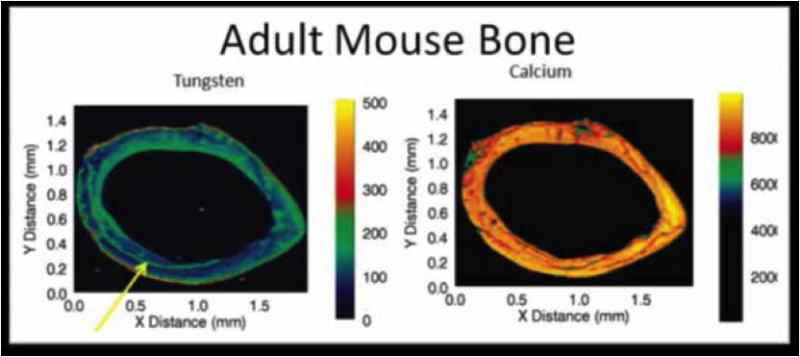There is new evidence that tungstate, [WO4]2- is associated with a range of cancers, and it now on an EPA watch list of potential hazards requiring further investigation. In collaboration with Professor Koren Mann at the Jewish Hospital research wing we have demonstrated that tungstate is adsorbed and incorporated into the bone. For example the element specific map of a mouse tibia cross section, generated at the Canadian Light Source, for tungsten distribution is shown below. Further, we have demonstrated by X-ray spectroscopy that the form present is no longer a simple monometallic tungstate, but has been altered to give a new form. This is alarming as the conditions of bone growth/reformation are expected to lead to polytungstate condensation, see the equation below. Polytungstates are often redox active durable catalysts and their formation in vivo may well relate to their correlation with these carcinomas. In this project we will use a range of spectroscopic and synthetic methods to characterize this critical and uninvestigated biochemistry.





